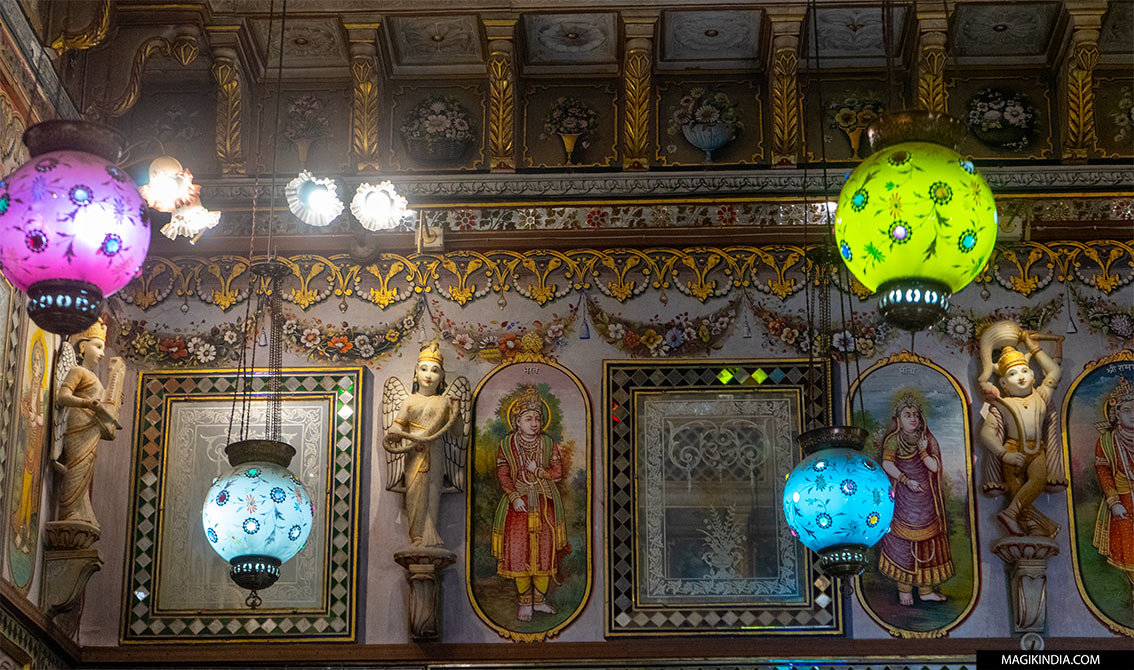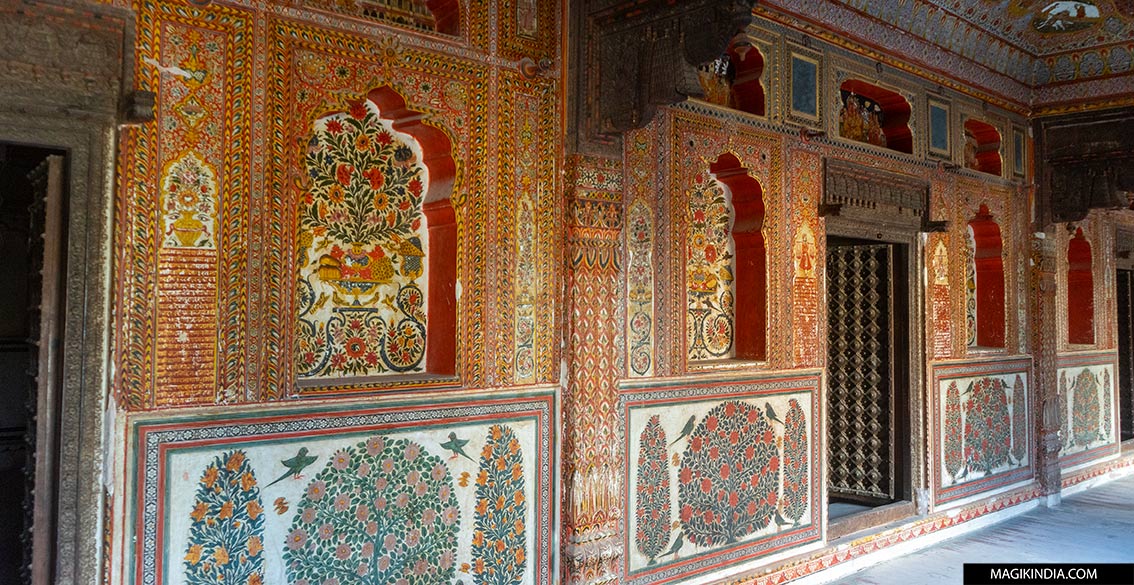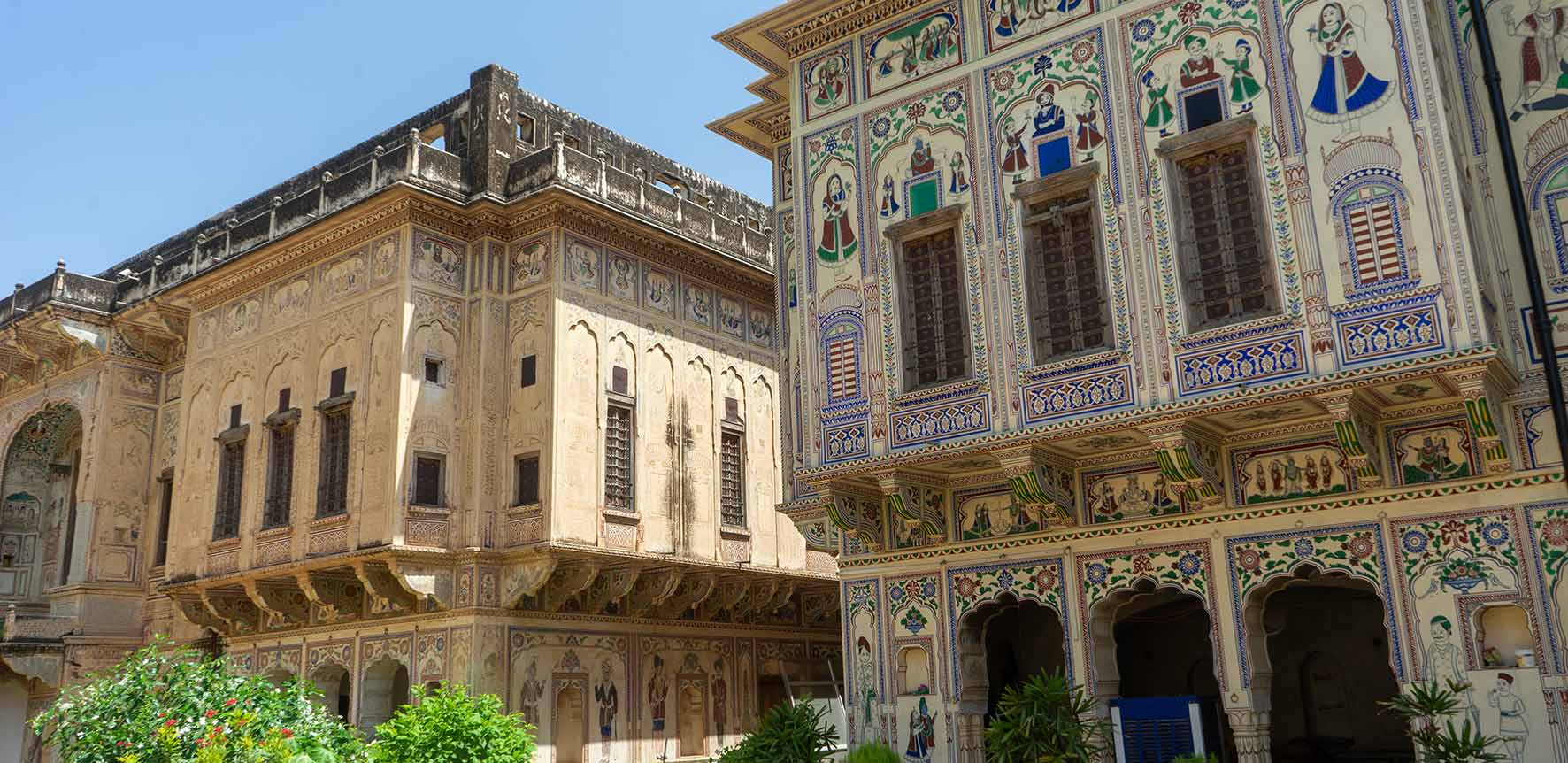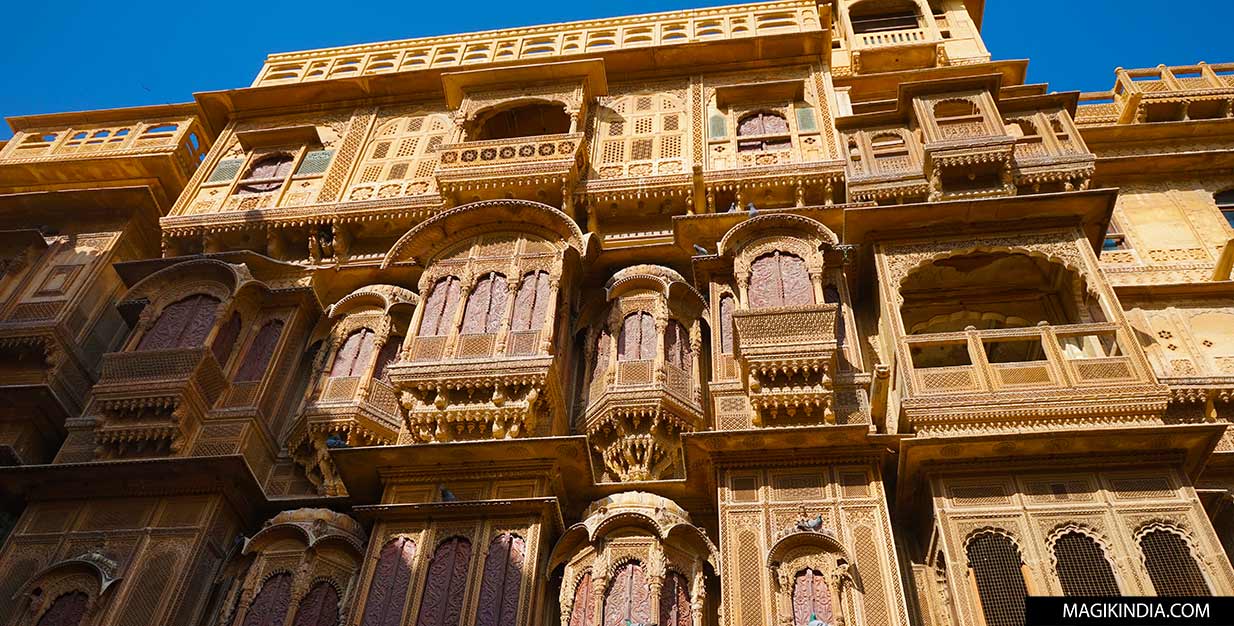
Khemka Shani, the jewel temple of Ramgarh
It’s no longer a secret, the Shekhawati region is one of my absolute favorites in Rajasthan. Not only is it the native land of my in-laws, but above all it is an inexhaustible treasure trove of architectural jewels. The Khemka Shani temple located in the city of Ramgarh, two hours from Jaipur, is one of these marvelous jewels.
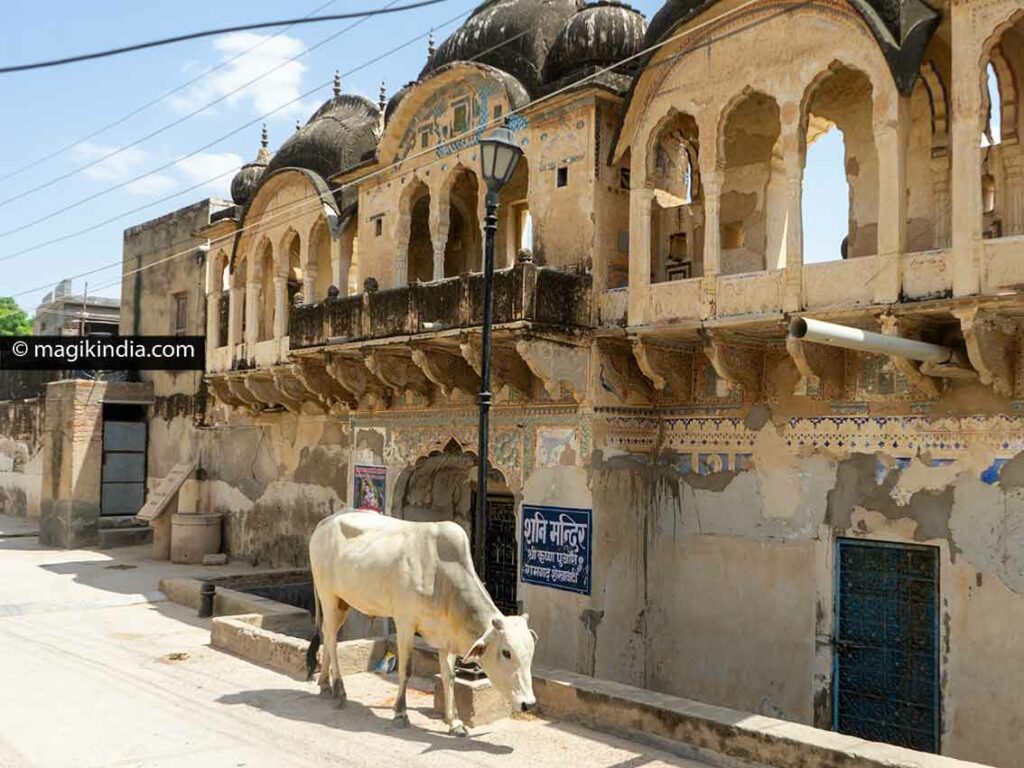
The temple from the outside is very sober. We can still guess, with the remains of frescoes, that originally, the building was entirely painted, as is the case with all the mansions in the Shekhawati region.
Although it appears older, the temple was built in the mid-19th century by the wealthy Khemka merchant family who had since migrated to Indore in Madhya Pradesh.
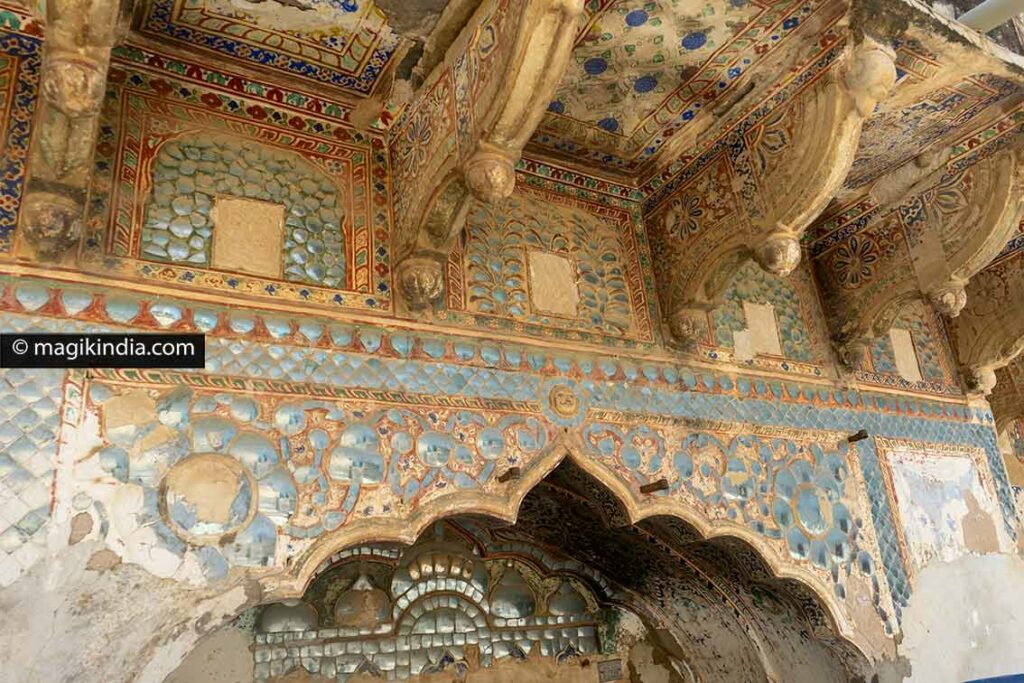
The first entrance located below the road is overlooked by several jharokhas, the corbelled balconies typical of Rajasthan.
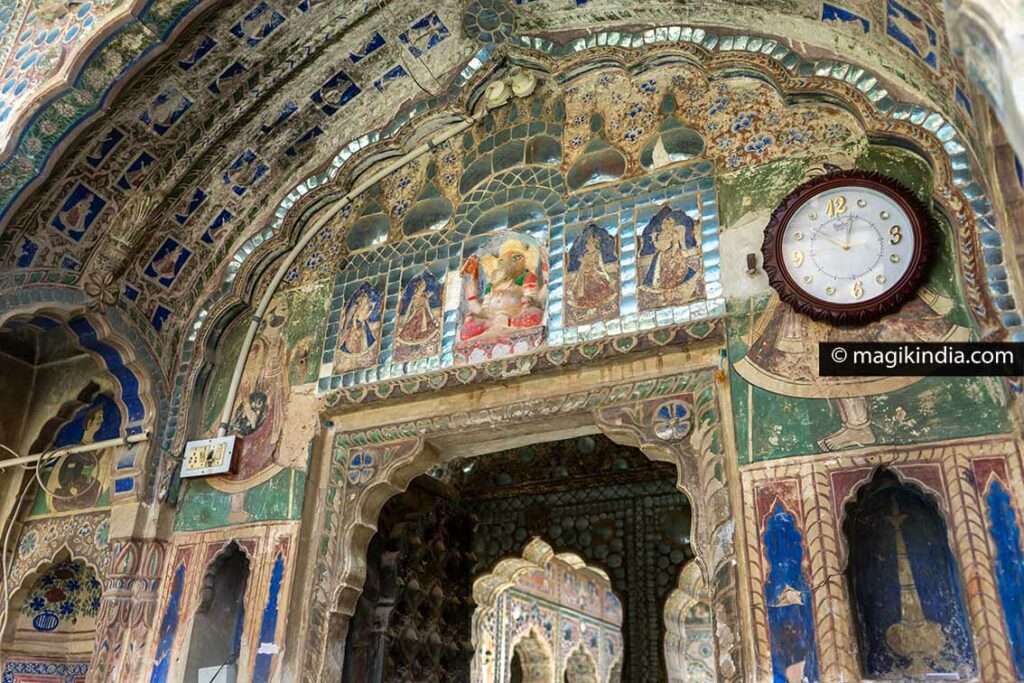
The second entry already tells us a little more about the wonderful continuation of the visit. It is decorated on both sides with frescoes in green and lapis lazuli tones as well as mirror mosaics.
The statue of Ganesha, the elephant-headed Hindu god, sits above the door surrounded by his two consorts Riddhi and Siddhi.
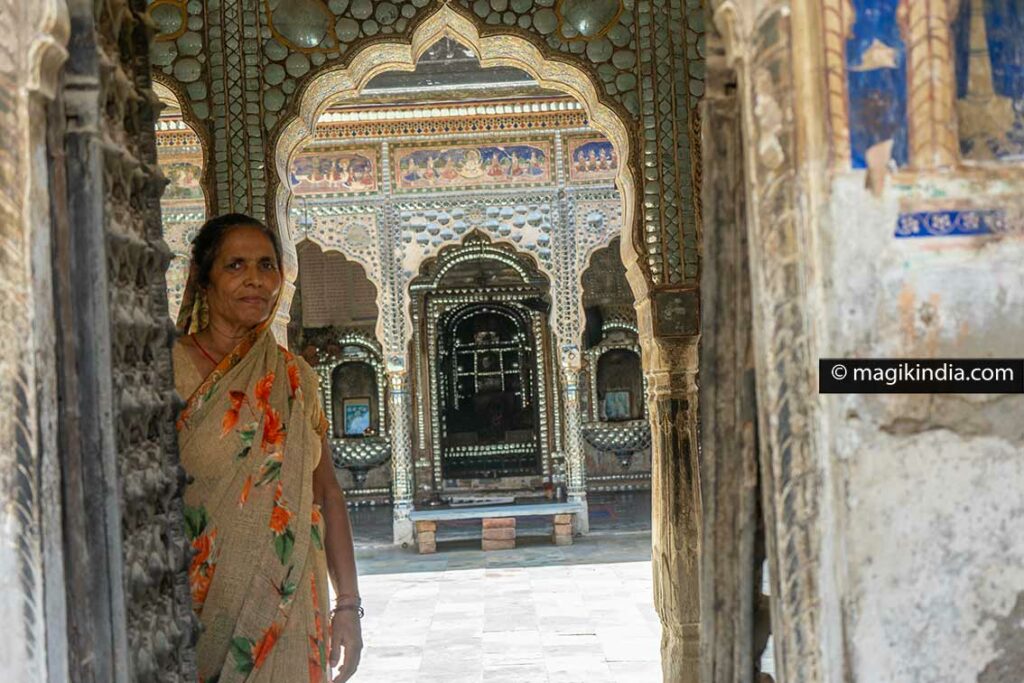
The Brahmin family who takes care of the temple, three women, the mother and her two daughters, come to welcome us.
From the first moment you set foot in the temple courtyard, you are amazed! The thousands of mirrors embedded in every corner of the temple make the entire building sparkle. It’s like opening a big treasure chest.
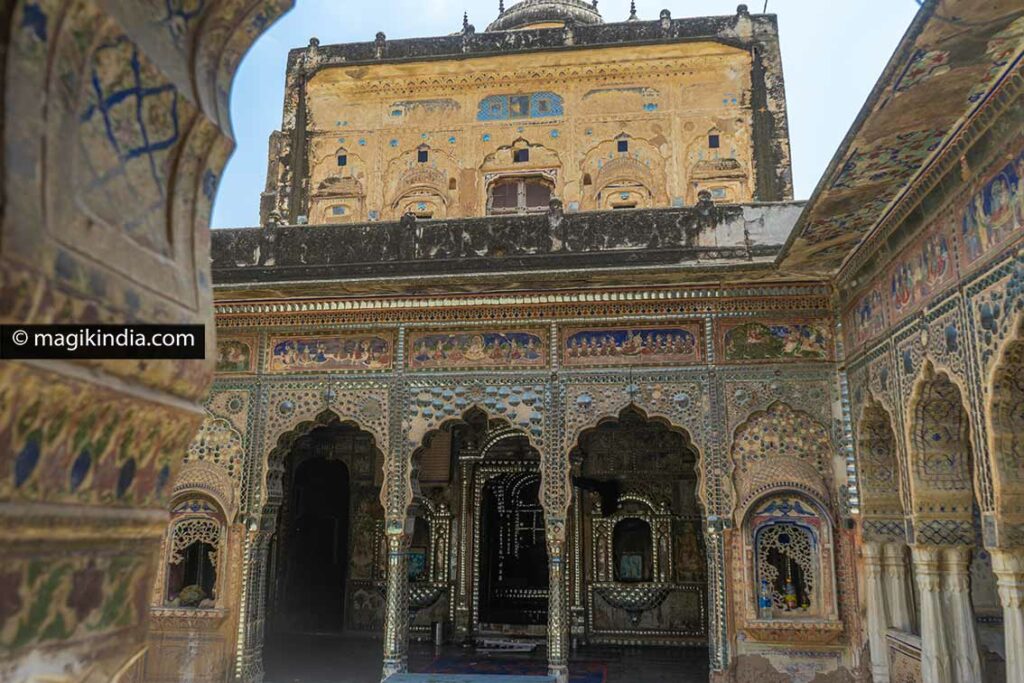
The delicate frescoes are painted in harmonious tones of blue, pink and green. Their beauty comes in part from the fact that they are still the original paints using natural pigments such as neel (indigo) for blue or gerou (earth) for red.
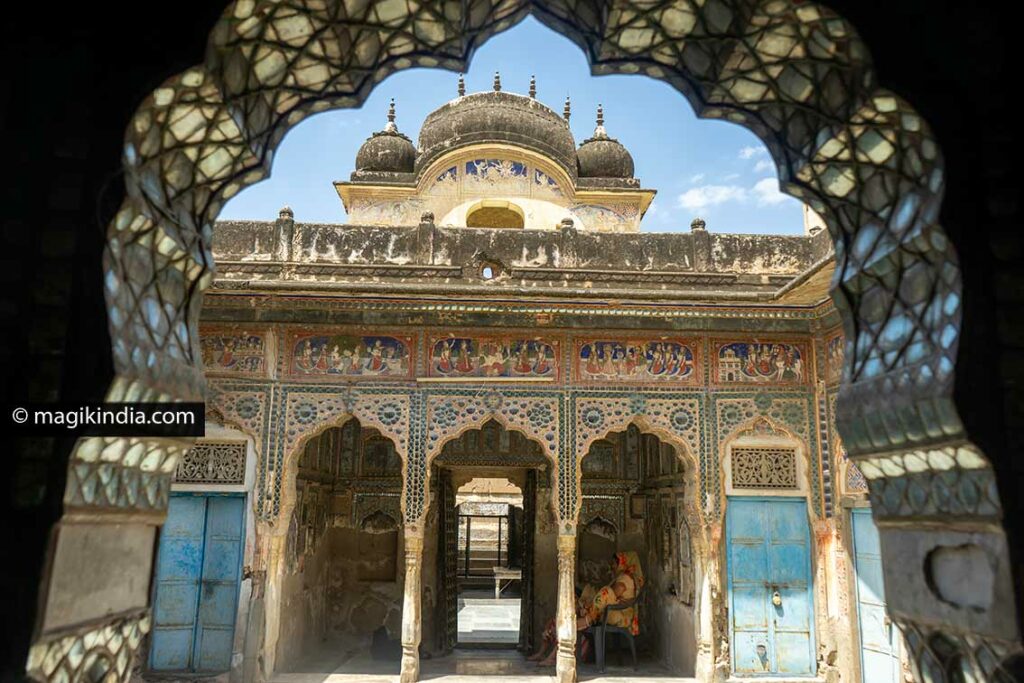
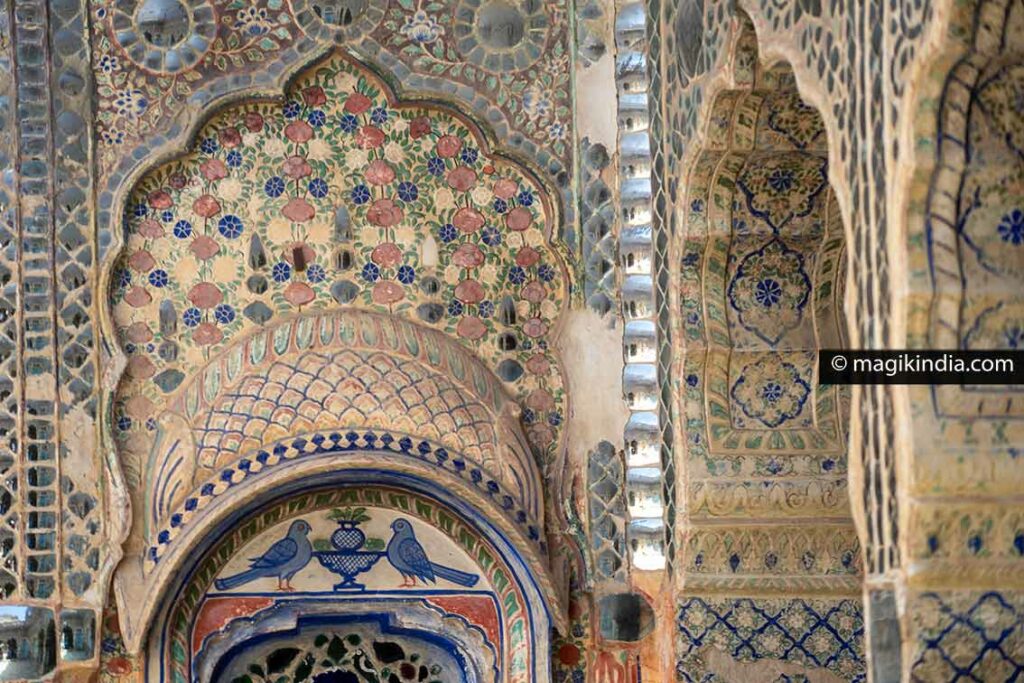
The frescoes are composed of floral motifs and Hindu mythology describing the great Indian epic of Mahabaratha or episodes from the lives of the deities Krishna and Radha: one can see Krishna lifting Mount Govardhan on his little finger.
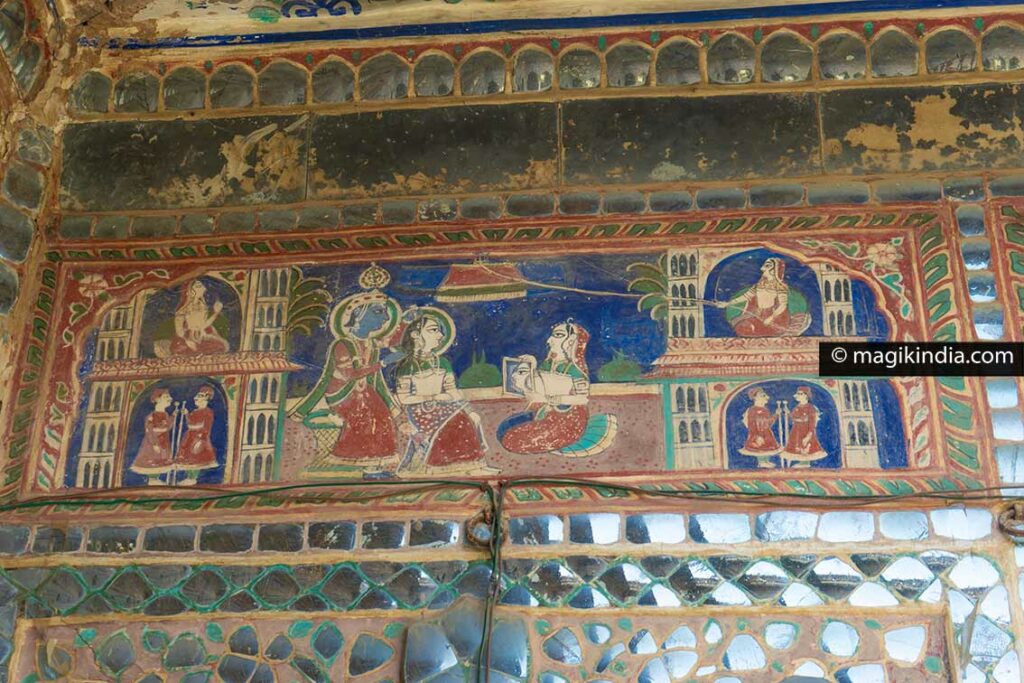
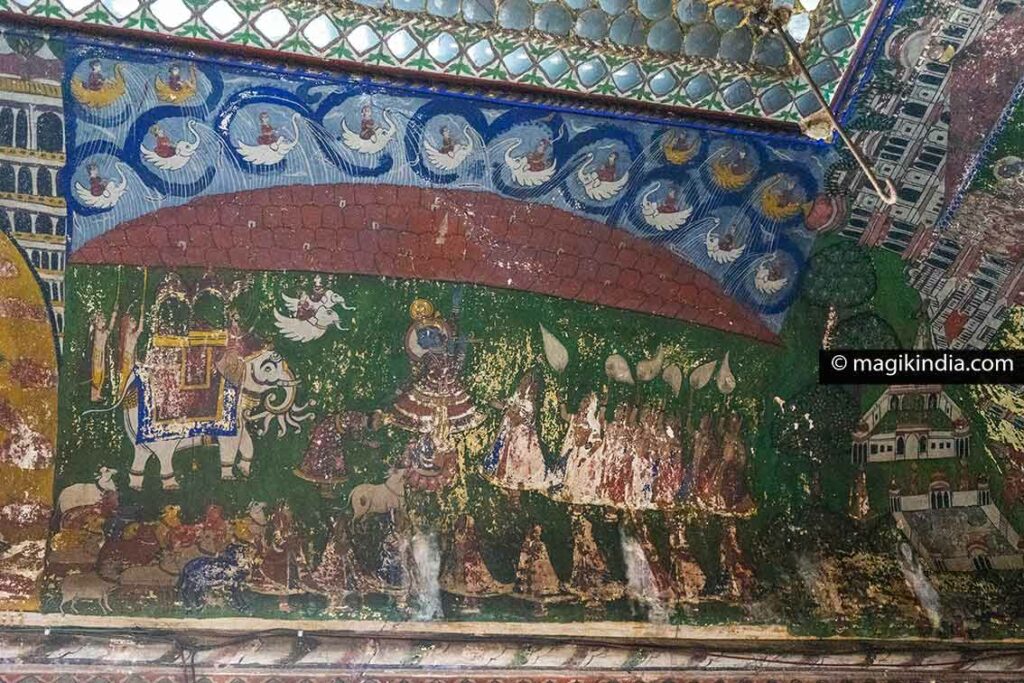
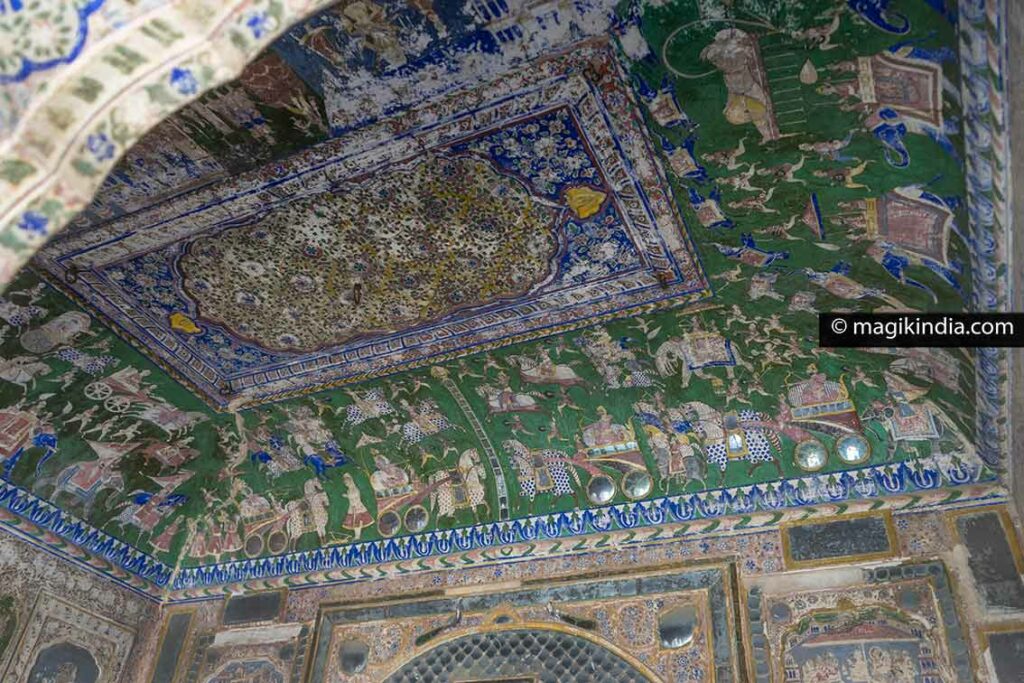
To complete the aesthetic of the place, floral panels in inlaid polished glass were added to the base of the walls.
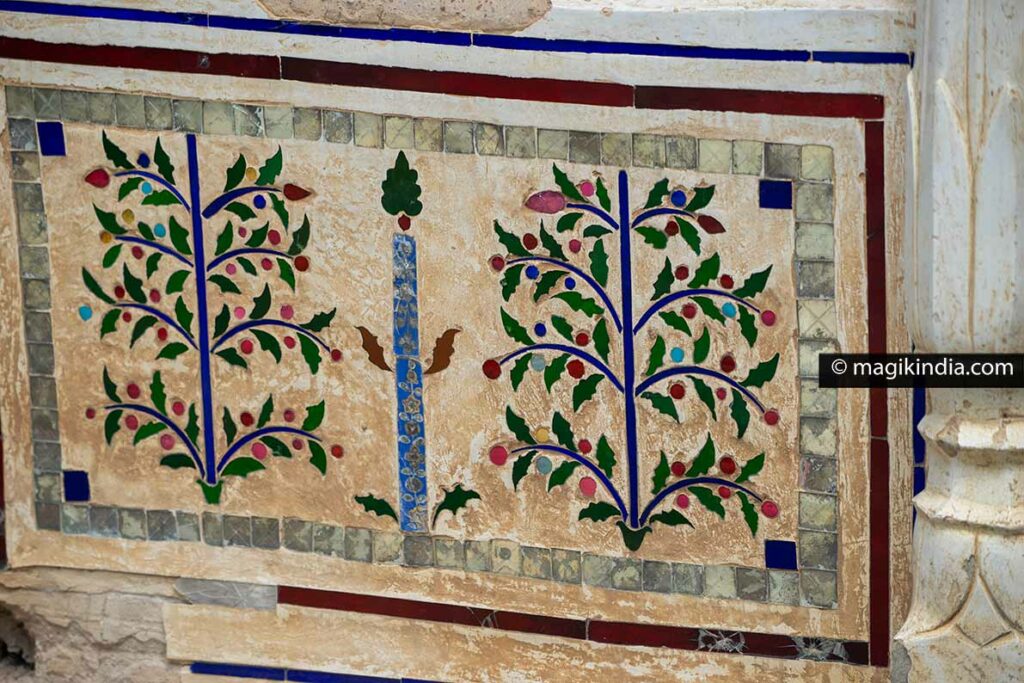
The further we advance towards the garbhagriha (the holy of holies) the darker and more mysterious the atmosphere, which is typical of temples dedicated to Shani.
In Hinduism, Shani is a very feared deity. he is the divine personification of the planet Saturn and is therefore one of the “Navagrahas”, the nine planets or astronomical phenomena which, in the Indian cosmological system, are believed to influence human destinies.
Shani represents karma and justice; in other words, this god can bring misfortune and loss to those who deserve it or can also confer benefits and blessings on those who are worthy.
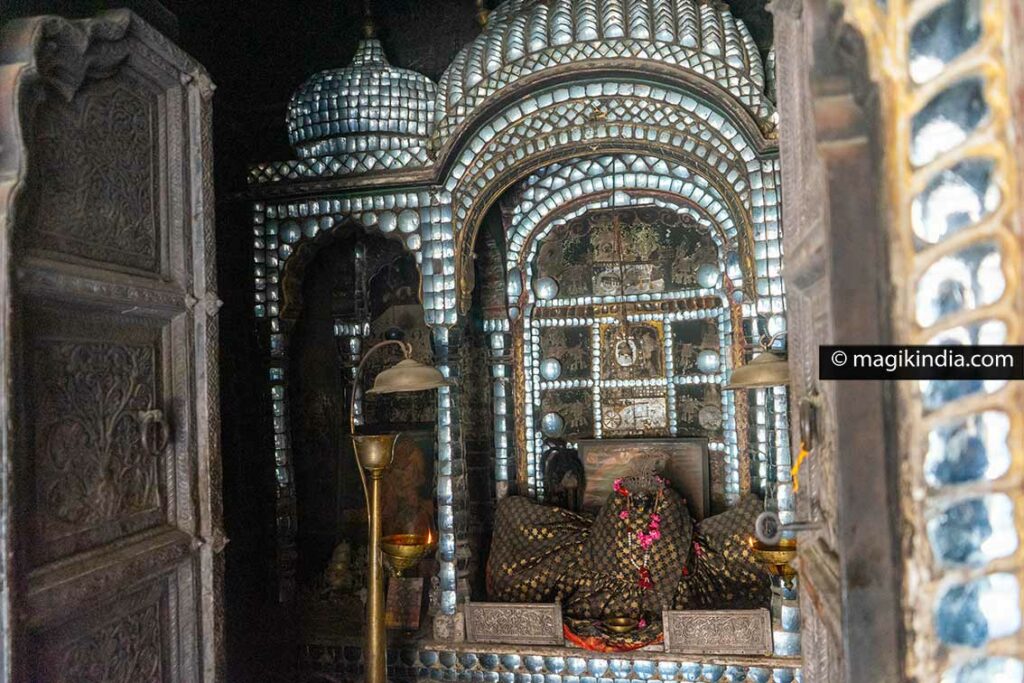
Shani is usually black or blue in appearance carrying a bow, arrow and trident and he sits on a raven, his vahana or divine mount.
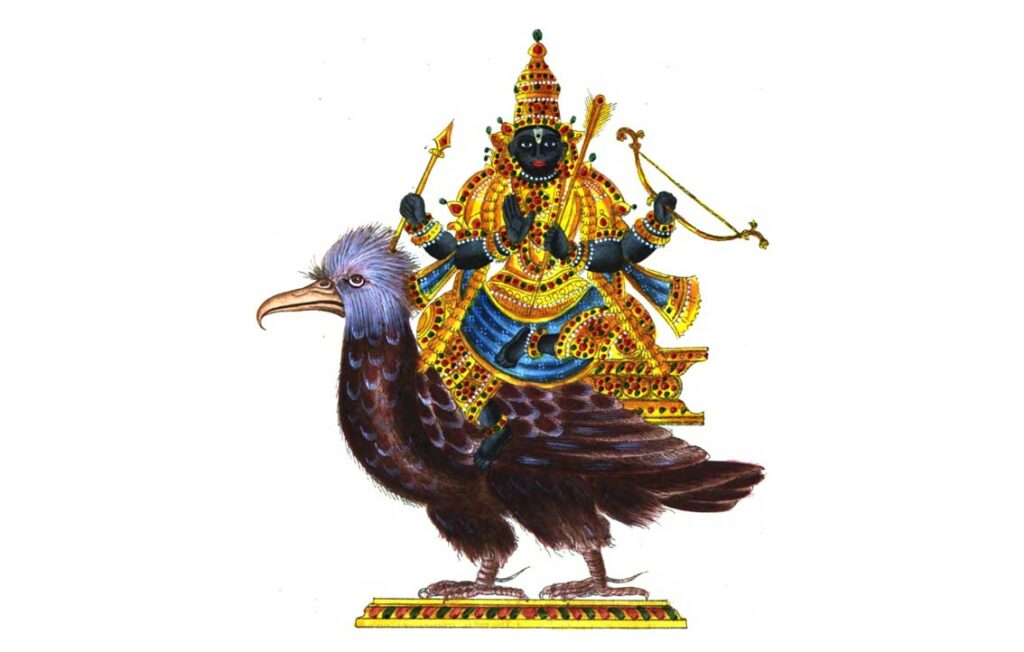
As Shani symbolizes Saturn, Saturday is considered the best day to worship this deity. The faithful come to offer him sesame oil poured into oil lamps.

The deity of Shani in the Kemkha Ramgarh temple is of great finesse. It is placed on a silver throne protected by a Chhatri on which hundreds of mirrors are encrusted… The effect is spectacular.
The severe black face of the statue is crowned with a silver diadem topped with a peacock feather, a reminder that Shani is also considered in certain Hindu texts as the incarnation of Lord Krishna. For example, in the “Brahma Vaivarta Purana”, Krishna is also called Saneeshwar, which means “the Lord of Saturn”.
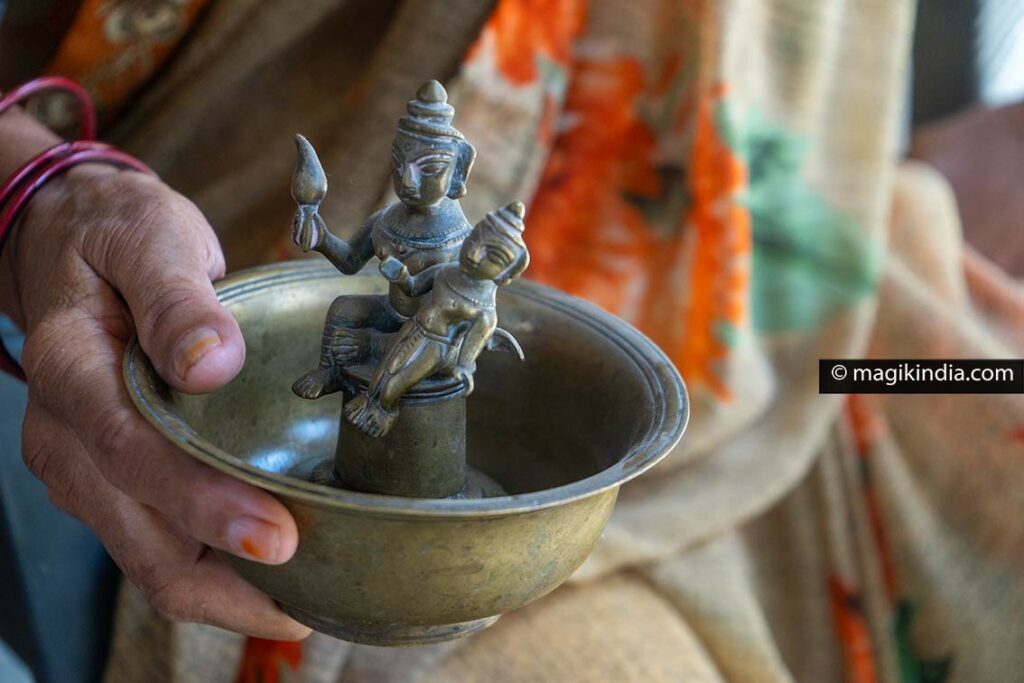
As we leave the temple, one last surprise awaits us. The guardian shows us a brass bowl, obviously old, in the middle of which the baby Krishna and perhaps his adoptive father, Nanda, are seated.
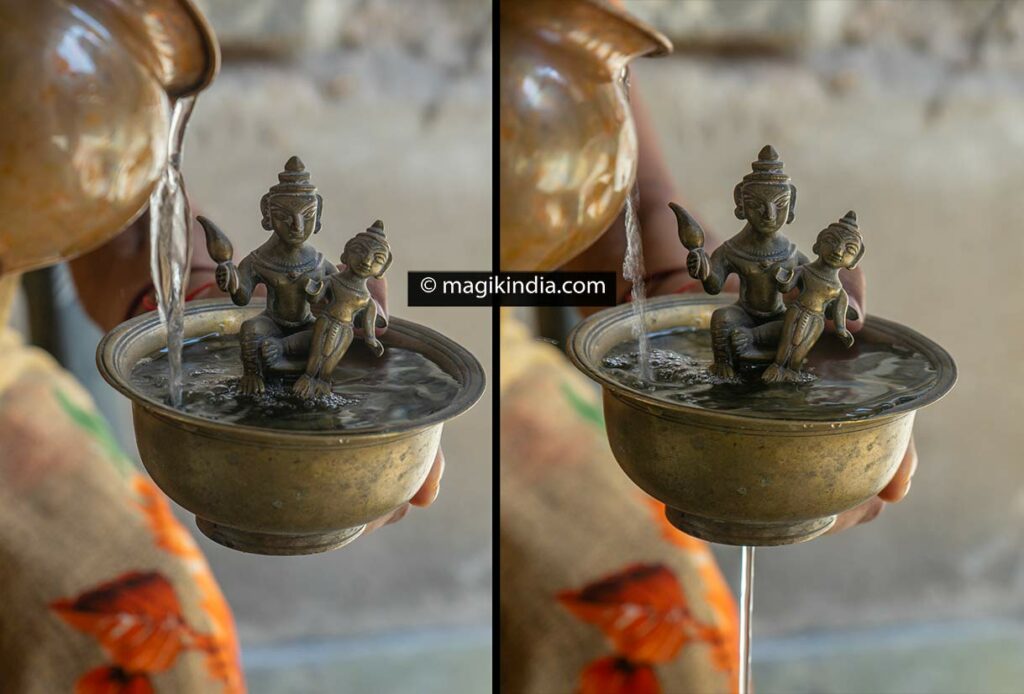
The lady begins to pour water into this bowl. Nothing happens until the water touches Krishna’s left foot: the water then flows through a hole below the bowl.
It’s magical, she tells us! Even if we quickly see the trick, we are happy to let ourselves be fooled by “Magik India”…
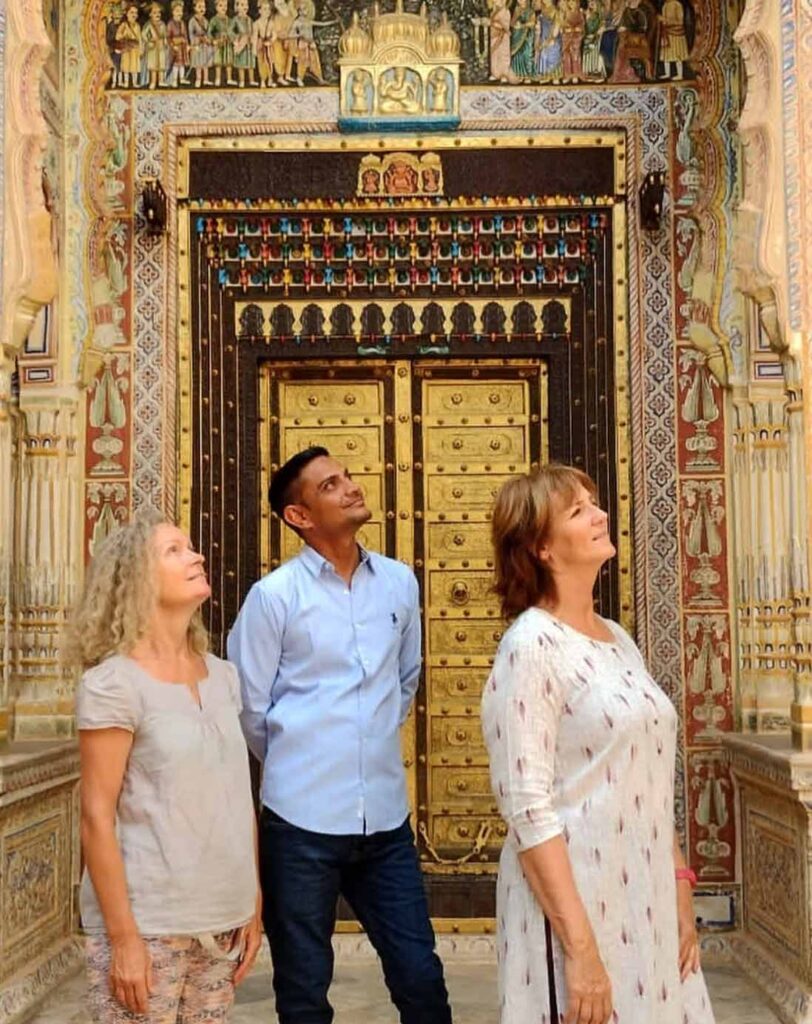
Dinesh Sharma, a native of Nawalgarh, is one of the best official cultural guides of the Shekhawati region and the co-director of MATHINI TRAVEL. With over 10 years of experience in the tourism industry, there’s no corner of Shekhawati that escapes him. He’s eager to share his passion for this unique region of India with you.
Whatsapp: +91 9509122902

